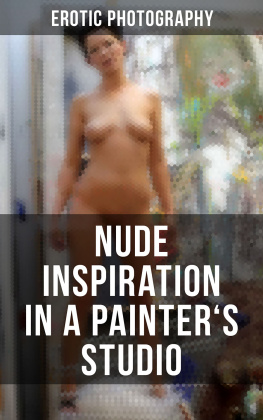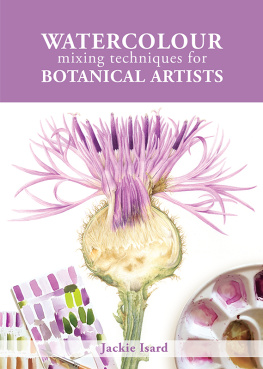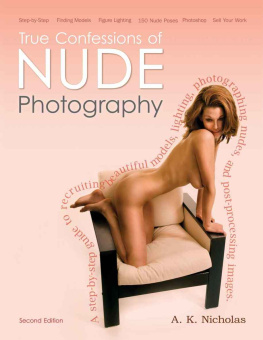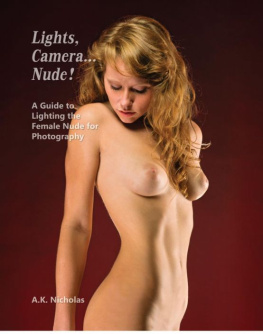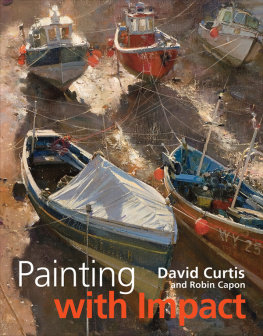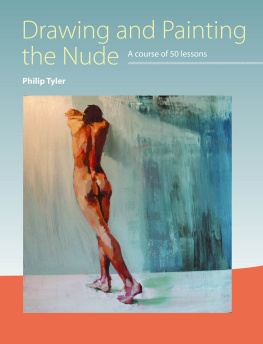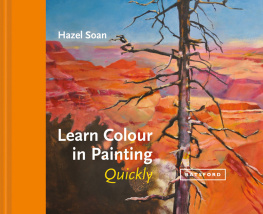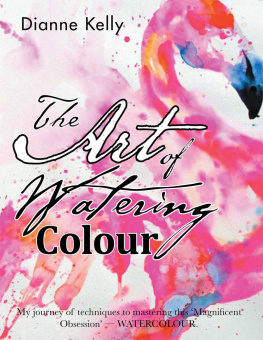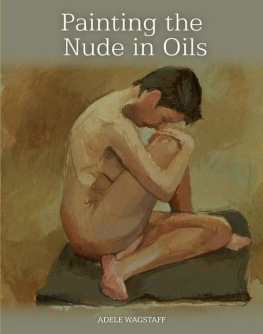
Painting the
Nude in Oils
ADELE WAGSTAFF

THE CROWOOD PRESS
First published in 2015 by
The Crowood Press Ltd
Ramsbury, Marlborough
Wiltshire SN8 2HR
www.crowood.com
This e-book first published in 2015
Adele Wagstaff 2015
All rights reserved. No part of this publication may be reproduced or transmitted in any form or by any means, electronic or mechanical, including photocopy, recording, or any information storage and retrieval system, without permission in writing from the publishers.
British Library Cataloguing-in-Publication Data
A catalogue record for this book is available from the British Library.
ISBN 978 1 84797 906 3
Frontispiece: Monica kneeling
Acknowledgements
I would like to thank Paul Coleman, Beth Hopkins, Michael de Jacquier, Jean and Derek Wagstaff for all their help, support and encouragement throughout the writing of this book.
This book would not have been possible without all the models who have patiently sat for me hour after hour over the years. It is to them that I would like to dedicate this book.
I would particularly like to thank Lucy Castro, Brian Catlin, Beth Hopkins, Jane Flux, Helen Saunders, Alan, Ange, Jess, Kerry, Monica, Sonia and Yuki.

CONTENTS

CHAPTER 1

THE NUDE A HISTORICAL PERSPECTIVE
Introduction
The nude within the context of western art and in particular within the tradition of European painting is now an accepted genre in its own right. Today, we are used to seeing images of the nude in painting from many different contexts and sources; from the art of the Ancient World to classical mythology, from biblical and historical painting to the nude becoming a subject of its own during the nineteenth and twentieth centuries. This continues to the present day as we see paintings of the figure, both clothed and unclothed within contemporary portraiture, images that examine human relationships, personality and psychology.

Drawing from a fresco of lovers drinking, from Herculaneum.
As we begin our study of the nude in painting we will first look at how the portrayal of the nude has evolved throughout history. When did we begin to make representations of ourselves and for what purpose?
In this chapter we will look at how painting the figure has developed through the centuries, from the earliest images to contemporary art. In doing so we will examine how different cultures have influenced the ways in which the nude is represented today.
Although notable sculptural examples will be discussed with their relevance and influence on the representation of the nude in painting, this chapter will primarily focus on the history of the nude in painting and other two-dimensional art forms such as wall painting, fresco and vases where a two-dimensional image is painted onto a three-dimensional surface.
This chapter is in no way intended to be a complete historical survey that includes every period, ism and artist as we progress through the centuries. Some artists and schools have been omitted while others will be discussed in depth. The history of the nude is immense and is particularly rich with images from the early Renaissance onwards so the examples that have been selected have been intentionally limited. Many of the examples will be recognized as some of the greatest masterpieces we have of the nude, whereas others selected will be less known or more unusual within this genre.
The earliest figurative art
When were the earliest works of art created and why were these artworks made?
The first evidence we see of these early works of art is during the Stone Age or Palaeolithic Period. The oldest figurative art first appeared in Europe towards the end of the last Ice Age. The art from this time is sculptural and small in scale. These sculptures of humans and animals are beautiful objects and in many cases are perfectly scaled-down images of the observed. A huge variety of figurative and patterned art has been found from this period. These artworks demonstrate how skilful and practised these early artists were in their craft and in showing the arrival of a complex and modern brain.
Huge swaths of Northern Europe at this time were frozen and desolate; this was isolated and dangerous territory. It was in these conditions that our early ancestors lived and began to create.
It was around 35,000 years ago that the many small carvings that we know today were produced. These ancient pieces were already showing an incredible level of artistry and refinement. The first examples of figurative painting are found on the walls of caves dating from c. 15,00010,000 BC ; these show incredibly detailed representations of animals and humans.
The earliest sculptures to have been found in Europe include about 160 small-scale figurines, made of mammoth ivory and limestone. Some fine examples were discovered in the Vogelherd cave in south-west Germany. These objects show a stunning level of accomplishment, being inspirational to the centuries of artists that followed. A small sculpture of a horse found in the Vogelherd cave, made from ivory in c. 28,000 BC , is an incredibly graceful piece with its harmonious curves and flowing lines it has been beautifully observed from nature. Could a modern-day sculptor accomplish a piece of similar beauty?
Of all these Prehistoric discoveries it is the small Venus of Willendorf (c. 25,00020,000 BC ) that is one of the best-known pieces. She now resides in the Museum of Natural History in Vienna and is made of stone and is less than 11cm in length. This is a particularly fine example of an early nude. These figurines have initiated many theories of ancient rituals and magical properties, figures being used as symbols of fertility, for example. These small-scale hand-held treasures have been discovered in many sites across Europe, the majority of which are in Spain and south-western France.
We dont know why these artworks were made and they seemed to serve no utilitarian function or purpose. Were the drawings and sculpture made purely in terms of Art, demonstrating the human impulse to create? Were they symbols of wealth, or used to show the peoples deep spiritual relationship with animals and the environment?
When looking at these wonderful pieces what is evident is the artists tremendous observational skills and that the artist was able to make formal artistic judgements, understanding beauty, craftsmanship and skill, using limited tools both made and found. Exquisite pieces were made that clearly show an understanding of perspective, weight and scale. In many pieces the movement of the animals and figures is clear and how light is used to describe the subtleties of form and volume.



